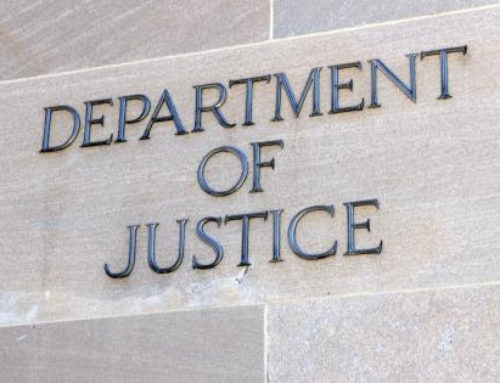In today’s complex healthcare landscape, maintaining coding compliance is more crucial than ever. Recent developments from the Department of Justice (DOJ), including the launch of the Corporate Whistleblower Awards Pilot Program (CWAPP), have further emphasized the need for a robust coding compliance plan. This program incentivizes whistleblowers to report misconduct, making it essential for healthcare organizations to stay vigilant. As coding managers, revenue managers, and compliance officers, it’s vital to understand the nuances of creating and implementing an effective coding compliance plan. Let’s dive into the good, the bad, and the ugly of coding compliance, drawing insights from industry experts.
The Good: Capturing Revenue and Ensuring Accuracy
A well-implemented coding compliance plan isn’t just about avoiding trouble—it’s also about capturing all billable services. Many healthcare organizations unknowingly leave money on the table due to undercoding or missed opportunities. A thorough compliance plan can help identify these gaps, ensuring that you’re billing accurately for all services provided.
Action Item: Conduct regular audits to identify both overcoding and undercoding issues. This balanced approach will help maintain compliance while maximizing legitimate revenue.
The Bad: Potential Recoupments and Compliance Risks
Without a proper compliance plan, healthcare organizations risk facing recoupments from Medicare, Medicaid, and third-party payers. These entities are increasingly active in their auditing efforts, making it crucial to stay ahead of potential issues.
Action Item: Implement a proactive auditing and monitoring program. Don’t wait for external auditors to find problems—identify and address them internally first.
The Ugly: Regulatory Scrutiny, Legal Consequences, and New Whistleblower Incentives
The “ugly” side of non-compliance can be severe. With increased funding and focus on healthcare fraud, agencies like the Office of Inspector General (OIG) and state Medicaid Fraud Control Units (SIUs) are more active than ever. The consequences of non-compliance can range from financial penalties to legal action.
Adding to this complexity, the DOJ’s new Corporate Whistleblower Awards Pilot Program (CWAPP) aims to incentivize employees to report fraud or misconduct, including violations involving private healthcare benefit programs. Under this program, individuals who provide original information leading to a successful forfeiture of at least $1 million may be eligible for financial rewards, potentially up to 30% of the first $100 million in net proceeds forfeited. This development creates new incentives for employees to bypass internal reporting and go directly to the DOJ, making it more important than ever for organizations to foster a culture of transparency and internal compliance (JD Supra) (Harvard CorpGov Forum).
Action Item: Ensure your compliance plan is not just a document, but a living, breathing part of your organization’s culture. Regular training, updates, and enforcement are key. Strengthen your internal reporting mechanisms to make them easily accessible and understood by all employees, encouraging internal reporting before external whistleblowing.
Key Components of an Effective Coding Compliance Plan
- Specialization is Crucial: Ensure your auditors and coders have specialized knowledge in the relevant clinical areas. Generic coding knowledge is often not sufficient for complex specialties.
- Set Clear Standards: Establish and document clear coding standards. Whether you’re using 1995 or 1997 guidelines, or payer-specific rules, make sure these are clearly communicated and consistently applied.
- Regular Auditing and Monitoring: Implement a robust auditing program. Aim for a 90-95% accuracy rate as a minimum standard.
- Focus on High-Risk Areas: While all coding is important, pay special attention to CPT codes and modifiers, as these are often the focus of external audits and have the highest impact on reimbursement.
- Continuous Education: Keep your coding team up-to-date with regular training and education on coding changes and compliance requirements.
- Immediate Remediation: When issues are identified, act quickly to correct them and prevent future occurrences. The DOJ guidance emphasizes the importance of not just identifying problems but proving they’ve been remediated.
- Consider External Validation: While internal QA is crucial, consider periodic external audits to ensure you’re not missing anything due to internal biases or knowledge gaps.
Taking Action: Leveraging the DOJ’s New Whistleblower Program
Given the DOJ’s increased focus on incentivizing whistleblowers, it’s more important than ever to review and strengthen your internal compliance programs. Organizations should ensure they have effective internal reporting mechanisms in place, actively engage with employees about compliance practices, and update training to address the potential for external whistleblower reports under the new CWAPP (Davis Polk).
- Assess Your Current Plan: Review your existing coding compliance plan. Does it meet the latest DOJ guidelines? Is it actively used and updated?
- Implement Specialized Testing: Develop or acquire specialty-specific proficiency tests for your coders. This can help identify knowledge gaps and training needs.
- Review Your Audit Process: Ensure your auditing process gives appropriate weight to different types of codes. For instance, CPT codes often carry more compliance risk than ICD-10 codes in many specialties.
- Consider Payer-Specific Guidelines: While Medicare guidelines are often seen as the gold standard, don’t overlook payer-specific guidelines that could impact your coding and reimbursement.
- Leverage Technology: Explore coding audit software and tools that can help streamline your compliance efforts and provide data-driven insights.
Conclusion
A coding compliance plan is not a one-time effort but an ongoing process. Regular reviews, updates, and staff engagement are crucial for its success. With new regulations and whistleblower incentives, it’s essential to stay vigilant and proactive in maintaining compliance.
Are you confident in your coding compliance efforts? The Coding Network offers a Free 10-case Coding Accuracy Audit per practice to help you assess your coding accuracy and compliance. Contact us today to schedule your free audit and take the first step toward robust coding compliance.
Want to learn more about creating an effective coding compliance plan? Join our upcoming webinar where we’ll dive deeper into practical strategies for maintaining coding excellence.
Don’t let coding compliance keep you up at night. Partner with The Coding Network for expert guidance and support. Explore our services to see how we can help safeguard your organization while optimizing your revenue cycle.
This updated version includes the latest developments from the DOJ’s whistleblower program and reinforces the importance of a comprehensive and proactive approach to coding compliance.
This post is based on The Coding Compliance Podcast Episode 1. The episode is hosted by Neal Green, Mark Babst, and Ross Ronan. You can listen to the full episode on Spotify here.







